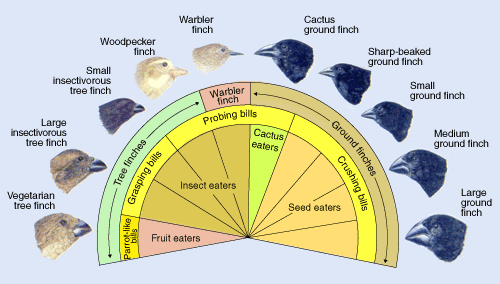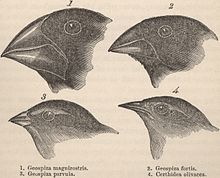One of the things that we don’t talk about very much in the Ontario beer scene is the initial outbreak of craft brewing in the province. I have the feeling that the reason for this is that it was pretty depressing for a very large number of people.
Over the Christmas break, I glommed on to a copy of Jamie MacKinnon’s book, The Ontario Beer Guide, published in 1993. It is subtitled “An Opinionated Guide to the Beers of Ontario,” which gives you some idea of the slant he took on the beer scene. It is not, it has to be said, a great deal different than the views that current commentators find themselves espousing. We like the underdogs. It’s a very interesting book for a number of reasons, one of which I will almost certainly talk about in a subsequent blog post. Also, MacKinnon is an entertaining author.
The thing that caught my immediate attention while I was leafing through it on Boxing Day was that he claimed on page 171 that Ontario would have more than 50 brewpubs by 1995. Initially I thought that this was a wildly optimistic prediction, but I’ve spoken to some other beer writers who recall that there was a period when it looked like it would go that way.
Apparently, there was a brief period in the early 90’s when there were four brewpubs on Eglinton between Yonge and Mount Pleasant. The Granite is still there, of course, but The Spruce Goose is now Philthy McNasty’s. I remember the Spruce Goose mostly as a result of the fact that they had Pinball. At 13, I was too young for beer, but I was intrigued by the multiball feature on the Jurassic Park table. Incidentally, in retrospect, the hubris of naming your business after an insane billionaire’s failed attempt at aviation was probably a poor choice. It would also probably be best not to name your hang-glider company after Icarus.
Mackinnon’s book systematically sets out to rate all of the beers in Ontario (except for Great Lakes’ Golden Horseshoe, which was too new at the time). Let’s consider the list. There’s Brick, who only continue to offer one of the beers that was rated. Conner’s is gone. Creemore is owned by Molson. Hart is gone. Lakeport is owned by Labatt and their original facility was scrapped. Niagara Falls Brewing Company is now The Syndicate. Northern Algonquin Brewery is gone, although some of their Formosa brands persist. Northern Breweries are gone. Pacific Brewing Company only exists in BC. Sleeman is owned by Sapporo. Upper Canada is owned by Sapporo (and the dark ale is a shell of its former self).
Arguably, the only brewery who has survived in a recognizable form is Wellington. The success rate for the small independent breweries listed in The Ontario Beer Guide in 1993 is about 3/13. About 23%.
In terms of brewpubs, of the 31 listed in the appendix to the book, the total number of survivors is 5. The Granite, Kingston Brew Pub, Tracks, Charley’s, The Lion. That’s not a completely accurate figure, as Denison’s and Amsterdam evolved into other things. Call it 7/31. About 23%.
If you started an independent beer related venture in Ontario prior to 1993, the aggregate chance of your having succeeded to the present day without having sold your business or having gone bankrupt is therefore about 23%. I didn’t even have to do any additional math.
That’s a 77% failure rate. Not as bad as Goldman Sachs, but not great.
Failure and collapse are parts of any ecology, even ones that appear to be thriving. Consider Darwin’s Finches. The Galapagos Islands are a relatively isolated environment and Darwin’s finches are part of the ongoing scientific study in evolution. Over time, something like fifteen species of finches have managed to evolve into individual roles in the Galapagos.
They have all developed different beaks so that they can take advantage of different food sources. There are finches that eat the seed of a certain type of cactus. There are finches that eat the flesh of the same cactus, having evolved beaks that can get between the needles. The Woodpecker Finch uses various tools to get at the food source it’s after. There’s even the Vampire Finch, which has been known to sustain itself by drinking the blood of boobies.

Man, this blog post is really finch heavy. Next time I'm going to write about something awesome like Monster Trucks. Did you know that Truckasaurus doesn't have a 77% failure rate? Truckasaurus never fails.
The point is that while this is a miracle of diversity from some points of view, these are only the species that made it. At some point along the way, there must have been more finches. From an environmental perspective, the Galapagos are relatively untouched. There must have been intervening species that did not evolve sufficiently to take advantage of the food sources available. Some fall by the wayside.
In point of fact, most of the species of finches that have ever existed in the Galapagos are long since dead or significantly altered. Evolution continues anyway: a 2006 study says that evolution in terms of beak shape is possible in less than 20 years.
For the purposes of this analogy, it’s helpful to think of small independent breweries and brew pubs in Ontario as finches.
They are small, adaptive organisms, all about the same size, who have developed different beaks in order to take advantage of the different food sources available to them. If they are located close to other species, they will have to evolve in an entirely different way so as not to deplete the same food sources. Some environments will simply not support them. Before the ecology reaches a state of equilibrium, some of these finches will become extinct.
Now, Ontario isn’t like the Galapagos. For one thing, the food source is expanding. There are more craft beer drinkers than there have ever been before. The thing that has me worried is that the number of craft breweries and brew pubs seems to me to be expanding at a rate that is equal to or greater than the speed at which the number of craft beer drinkers is expanding. There is probably an equilibrium point, but I don’t pretend to know what it is.
There are a lot of new Ontario craft breweries starting up. Many of them are making some very tasty beers. Lots of them are outside Toronto. One of them is entirely fictional.
Now, we may not be anywhere near the equilibrium point for the ecology in terms of beer in Ontario. I hope we’re not, as many of the people who work for these breweries are friends of mine. Further, there will be more start-ups over the next five years as Niagara College students decide they want to brew their own beer and the craft beer market in Ontario catches up with other markets.
The failure rate might not be 77% anymore for independent breweries and brewpubs in Ontario over a 20 year period. It certainly seems as though it has gotten lower. The important thing to remember is that we’re in the middle of a boom, and it probably will not last indefinitely. There will be equilibrium.


Pingback: Liberty Village Brewing Company
Pingback: It Takes A Village – Liberty Village Brewing Company | Bloggers of Beer